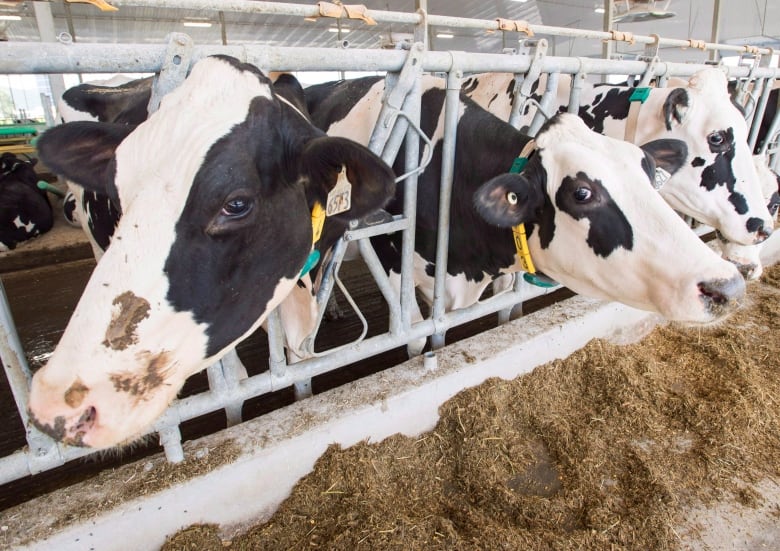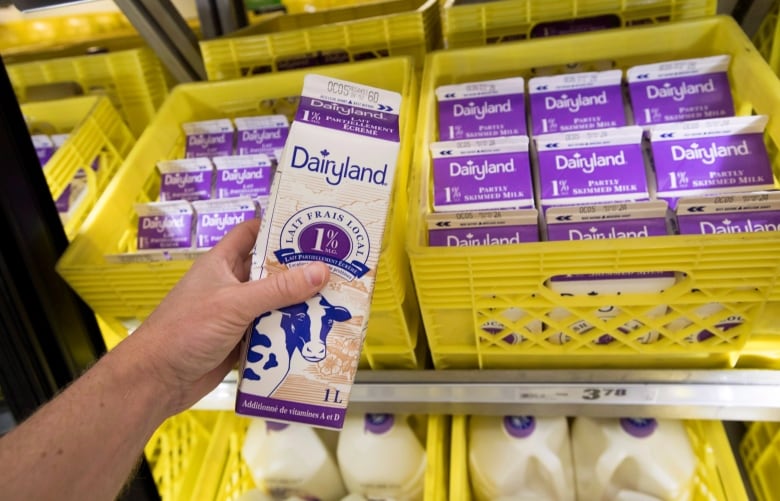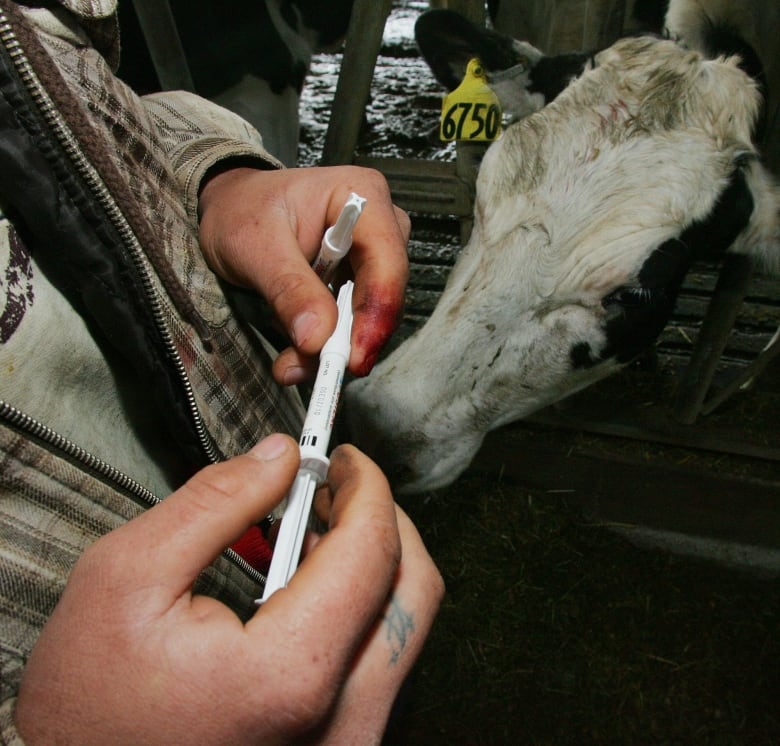CBC News: Hormones, cows and the new trade deal: What you need to know
posted October 3, 2018
Some U.S. dairy farmers use a hormone that’s banned in Canada
With news that Canada agreed to open its borders to more U.S. dairy products under the new United States-Mexico-Canada trade deal, some Canadians are wondering whether there will be more milk sold here produced from hormone-treated cows. In Canada, farmers are not allowed to give their cows hormones to increase milk production. In the United States, they are. Here are the answers to some often-asked questions.
What is rBST?
Recombinant bovine somatotropin (rBST) is the synthetic version of the growth hormone bovine somatotropin (BST), which cows naturally produce. Back in the 1930s, researchers realized they could increase milk production by injecting cows with BST, which was helpful in certain countries during food shortages, such as in the Second World War. But BST wasn’t being produced commercially, so it wasn’t feasible to continue to use it on a greater level.
In the late 1970s and early 1980s, scientists at biotechnology giants Genentech and Monsanto developed a genetically engineered version, rBST, commercially known as Posilac.
The U.S. Food and Drug Administration approved rBST for use in 1993.
Health Canada reviewed it in the late 1990s but did not approve it.
Why do American farmers use it?
rBST is used to increase a cow’s milk production. A 2003 study published in the Canadian Journal of Veterinary Research found it increased the amount of milk by 11 to 16 per cent. But only a minority of U.S. farms use it. A 2007 United States Department of Agriculture (USDA) study found that only about 17 per cent of all American cows receive the artificial hormone.
Why is it banned in Canada?
Health Canada determined rBST posed no health risk to humans who consumed milk from cows who had been given rBST. But it had concerns about the potential health effects on the cows.
A 1999 report commissioned by Health Canada found there was an increased risk in the cows injected with rBST of mastitis, or breast inflammation, of up to 25 per cent; of infertility by 18 per cent; and of lameness by up to 50 per cent.

Health Canada banned the use of rBST because of the risk to cows’ health. (Ryan Remiorz/Canadian Press)
Why is it such a hot-button issue?
Dr. Michael Pollack, a professor of medicine at McGill University in Montreal, was on the panel that advised Health Canada back in the 1990s. He says while there has been no scientific proof that consuming milk from rBST-treated cows is dangerous, there is still some controversy around its use.
“It is impossible to rule out small, subtle effects,” he says. “The benefits were considered to be close to zero, so it was felt that no risks whatsoever should be accepted.”
Can U.S. milk from cows given rBST be sold in Canada?
Yes. Dairy products made with U.S. milk ingredients are already sold in Canada. The main challenge will be knowing, because there are no labelling requirements for dairy products made with American milk to let consumers know when they could be exposed to hormones.

Checking for a Canadian label on your milk will help you know whether the milk was produced by cows given hormones. (Jonathan Hayward/The Canadian Press)
How do I know if it’s in my milk?
The label will still help you. If you buy milk that has the blue-and-white Dairy Farmers of Canada logo on it, you know it was produced in Canada, from cows who were not given rBST. If you buy a product produced in the United States, you will not know.
“Should consumers know? I would say yes,” says Sylvain Charlebois, professor of Food Distribution and Policy at Dalhousie University in Halifax. “Let consumers decide what they want to buy and don’t want to buy.”
